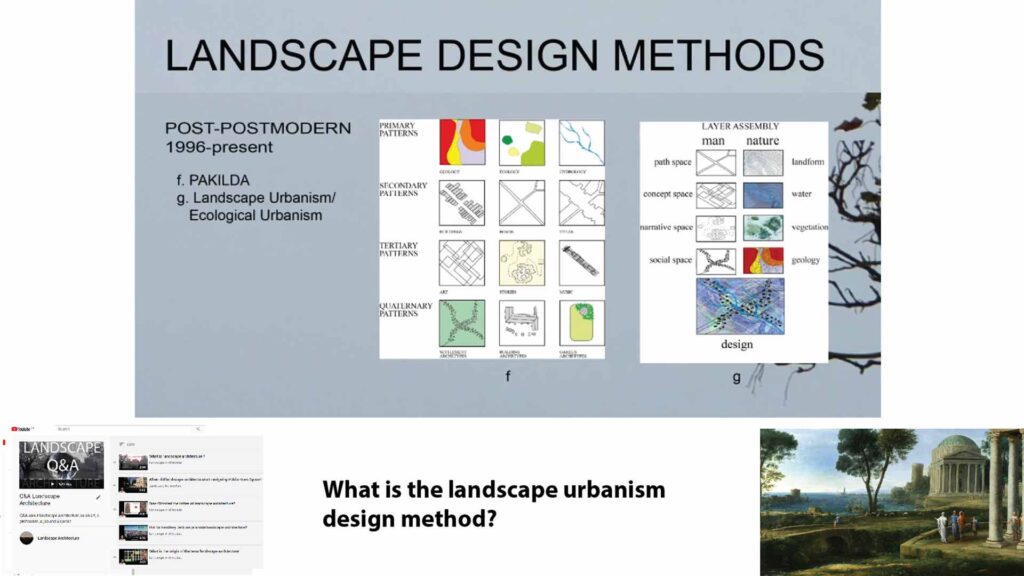What is the landscape urbanism design method? Q&A

Short answer: Landscape Urbanism is a theory of planning and design arguing that ”landscape”, rather than ”architecture”, should be the context for organizing urban areas and cities. The design method resulting from the theory involves a layered approach to analysing aspects of the environment (hydrology, circulation, ecology etc) and making proposals for the individual layers while also generating development strategies for the whole area and its surroundings.
I see landscape urbanism as a good theory which is harmed and hindered by its proponent’s fondness for the obscure terminology of post-structuralism (inspired by Gilles Deleuze, Jacques Derrida, Michel Foucault, Jacques Lacan, Jean Baudrillard etc).
Landscape Urbanism integrates the ecological layers used by McHarg with the cultural layers used for Parc de la Villette. In a book on City as landscape (1996) I described this integration as post-Postmodern. In place of an ‘anything goes pluralism’, it can give us a diversity which is rooted in ecology, conservation, culture or faith. Many beliefs cannot be proved or disproved by science. But they are very important, in design and in life – and in landscape architecture.
How can I use the landscape urbanism design method?
You can do it with tracing paper, with CAD, with diagrams or with GIS software. The key is to have a drawn layer for each area of knowledge that inputs to the design and this will depend on client requirements and on the designer’s perceptions of the problems to be solved and the design objectives to be achieved.
